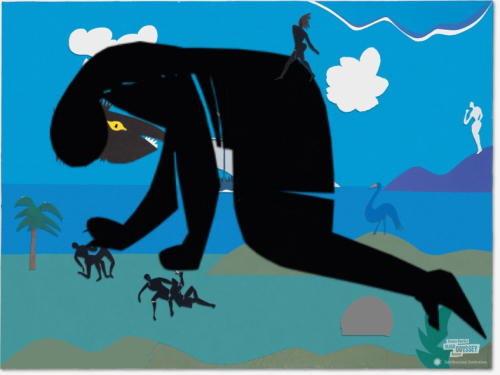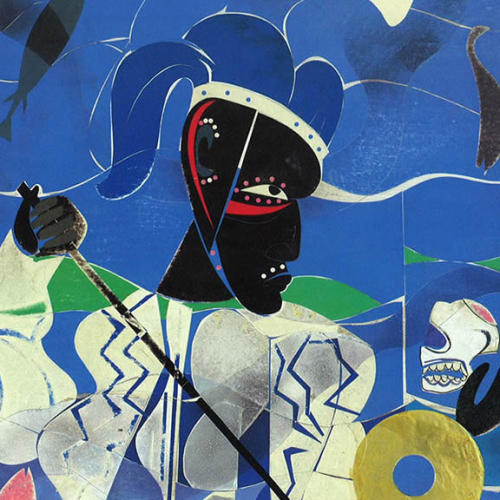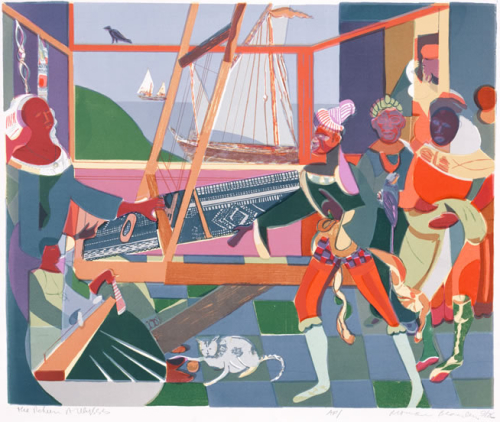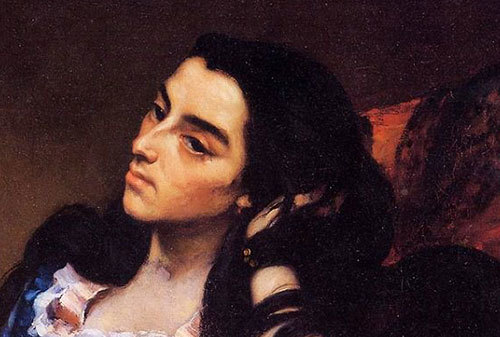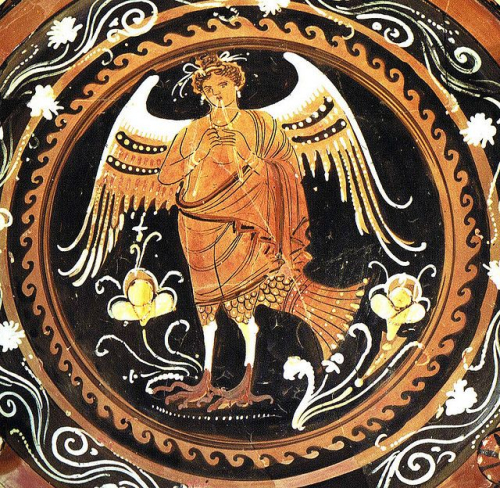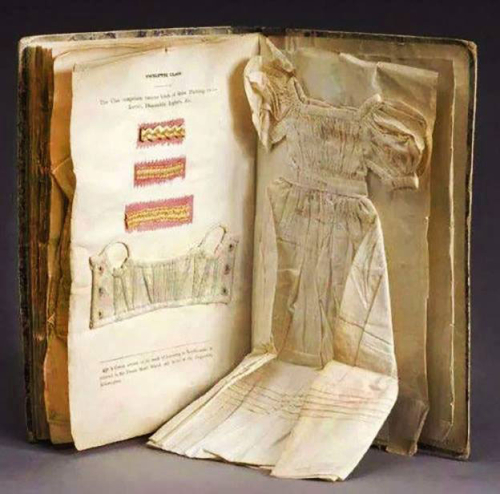Midori Snyder's Blog, page 29
April 1, 2017
Romare Bearden: A Black Odyssey
I was delighted by a recommendation to have a look at the beautiful collage work of African American artist, Romare Beardon, whose "A Black Odyssey" is an extraordinary presentation of the Homer's Odyssey. The images are stunning, and the interpretation as poignant and meaningful as its Greek origin. Here's a description from the Smithonian about the original exhibit (now housed at the University of Columbia, NYC):
"Born in Charlotte, N.C., Romare Bearden (1911���1988) moved with his family to Harlem as a young child, part of the Great Migration of African Americans from the inhospitable South to greater opportunity in the North. Throughout his career, Bearden created images of the lives of travelers on their way to and from home, a theme no more powerfully explored than in Black Odyssey, his 1977 series of 20 collages based on episodes from Homer's epic tale "The Odyssey". Bearden had examined classical themes before, but "Odyssey" series expanded his exploration of literary narratives and artistic genres by presenting his own personal reinterpretation of the subject.
In creating a black 'Odyssey' series, Bearden not only staked a claim to the tales of ancient Greece as having modern relevance, he also made the claim of global cultural collage���that as humans, we are all collages of our unique experiences,��� said O���Meally. ���Indeed, Bearden does not merely illustrate Homer���he is Homer���s true collaborator, and he invites us as viewers to inherit Homer���s tale and interpret it as our own.���
Here's an index of some of the images along with an audio file of the work. And here are a few of my favorites -- though really the enitre collection is stunning. (The top image is of course The Sirens.)
(Images top to bottom: The Sirens, Circe, The Cyclops, Poisiden, The Sea Nymph, Odysseus Returns to Ithaca.)
March 31, 2017
Sirens IV: Reinventions
As The Innamorati is set in the mid-1500's of Renaissance Italy, I knew that there would be historical changes in the images and meanings of the Siren from antiquity to the Renaissance. I was counting on it, actually, knowing that in Italy at least, there has been a continuous tradition of the Siren and that all her variations--from the earliest to the Renaissance versions of the Siren would continue to exist side by side. Italian culture is such that even now, satyrs and saints sit down at the same table to dine and rather than replacing one idea with another, both operate in a kind of friendly joust. (Most of the time, anyway.) The multifaceted interpretation of the Siren is what made Erminia possible in the narrative -- she is at once an ancient creature and a contemporary to her Renaissance neighbors without any anachronisms. She is quite like the Commedia masks as well -- evoking the ancient traditions and cults of the Greek and Roman dramas while transforming just enough through the centuries to remain in current fashion. I would like recommend reading all of Siegfried de Rachewiltz's De Sirenibus -- there are so many insights into the Siren that I just can't add here. Also, I was aware that once I was full of enough content and ideas for Erminia, I stopped taking notes and just read.
Notes from De Sirenibus IV:
Medieval Sirens: Translation problems by the early Greek Church Fathers: saw the Sirens as a type of mournful ostrich (??) sometimes a jackal, an evil ghost, or night owls with mournful voices..."they are certain demons, cruel and wild ghosts...for the Greeks say that the Sirens have sweet voices, but are deceitful beings." Alexandrian translators seem to want to connect the Homeric Siren to other much older themes of lament such as the destruction and capture of Jerusalem by Saladin: "The Siren wails among the people for the killing of orphans, the peacock in the rushes laments the young dead." St. Jerome (A.D. 340-420) in his Latin translations of the Bible also took liberties with Hebrew demonology. And while he amended the transposing of Siren over female ostriches, he did put the Sirens in their Babylonean "hideouts of voluptuousness" alongside the dragons, the howling ostriches and other shaggy creatures. " In the end, however, after consulting bestiaries, he decided to lift a description of a basilisk, the deadly crested serpent. (68-69)
Clement of Alexandria (A.D. 160--c.215) Pagan Wisdom and Christian Interpretations: Clement endeavored to explain the Christine doctrine to his followers in images that were known to them -- and he used Greek myth and literature: "Come, I shall show you the Logos, and the mysteries of the Logos, and I shall explain them to you in images that are known to you. " His interpretations are daring metaphors. Here the Sirens are the voice of Greek wisdom: "It seems to me most of those who themselves Christians resemble the companions of Odysseus, for they approach the Logos without a feeling for a more refined culture: they sail past not past the Sirens, but past the rhythm and the melody of Greek culture, they seal their ears with a refusal of learning, because they know they would not find the way home, if once they listened to the Greek wisdom." Odysseus for Clement, is the man tied to the mast of faith while hearing the wisdom of the pagan world.(70)
And Clement continues -- comparing the Siren's song to the voice of God: "Their song is so powerful that those who hear it are drawn to them almost against their will. The voice of God in the Scriptures forces those who hear to believe it and to obey without proof, just as the voice of the Sirens compels one to follow it almost against their will. " But, having made the comparisons between Christians and the journey of Odysseus, Clement also preaches hell and brimstone from the pulpit, (and quoting from Homer for the benefit of the congregation who would otherwise never have read it) returns the Sirens to "she strangles man, distracts him from the truth, takes his life. She is a trap, an abyss, a pit, a devouring monster. She is an island of destruction, heaped with bones and corpses. On her sits an attractive wench, Lust, and delights with her worldly music...She praises you sailor, calls you honored. but let her feed upon the dead: A wind from heaven comes to your aid, sail past pleasure, sail past song, it causes death." For Clement, the example of the Siren would also become the lure of heresy a warning for those who dabbled too deeply in pagan writings. (71-72)
The Sirens voice and the poet are linked in the concern over the influence of pagan literature and music. The poet Boethius (480-524) railing against the "sweet lie of poetry" in the antiquities, calling the Muses (and by extension the Sirens) "mereticulas" (prostitutes) -- a sort of internal battle between voices. Boethius calls the Sirens of elegiac poetry "scenicas meretriculas" -- showy prostitutes. The Siren song gains corporeality, transferring the Siren from song/bird to the female body, signifying the dangers of excess and lust. (80)
Boccaccio (1313-1375) creates the first draft of The Genealogy -- a compilation of mythology from ancient to contemporary sources compiled into a general poem and fifteen books and was written in Latin. He establishes Demogorgon as the original pagan god, then goes through the all progeny and descendants which fills about 12 books. Book XIV contains a defense of poetry. It is a massive attempt to reduce all of classical mythology into a system, and it revealed Boccaccio's admiration for the erudition of past scholars and no doubt his desire to be counted among them. (162-163)
Boccaccio's description of the Sirens is a wonderfully weird combination of the scholarship of the ancients (who provided allegorical significance to the Sirens) and a Calabrian "scholar" Leonzio Pilato, who in addition to translating the Odyssey was also a primary source of oral traditions concerning ancient folklore. In the end Boccaccio pulls from all of these varied sources to create an image of the Siren that is an uneasy mixture of bits of scholarship and popular folklore from the ancients to the early Renaissance and which place her firmly in the harlot's camp. (165)
Petrarch's (1304-1374) poetry offers a re-purification of the Sirens returning her to role of Muse. Petrarch, influenced by a neo-Platonic inheritance and emerging tradition of courtly love, creates a new poetic avatar in the Siren. The Siren returns as a celestial muse and fate in the character of Laura-Amor, the subject of Petrarch's poem. (Sonnet: 61) "When Love inclines her beautiful eyes toward earth/collects her straying breath into a sigh with her own hands, then frees them in her song so clear/angelic, gentle, and divine.") The Siren's voice, rather than sending him heavenward, draws him back to earth. Though the poet is so moved by the sound of her voice that he is willing to die right there and then, Laura the Siren is paradoxically not an agent of death, nor even transcendence...but rather embodies that divine power which holds him captive in earthly existence. (Sadly, Petrarch would later in his life renounce women after Laura's death and would regard them in Christianized rather than Platonic versions.)
One of my favorite poets of the Italian Renaissance -- Aretino Pietro, who was something of a wild whore-mongering poet and who penned the infamous "I Modi" (The Ways -- a depiction of 16 pornographic illustrated poems which are terrific) decided to write something rather splendid in collection of love poems to another's man's wife named Angela Serena. All of the images revolve around the angelic Siren and the neo-Platonic ideal of her place in the harmony of the music of the spheres. Most famously, is the illustration at the top by Titan of one of the stanza -- the shaggy-headed shepherd staring at the Siren, seated on her cloud, surrounded by stars recapturing the theme of the fallen body longing for transcendental love of perfection represented by the Siren which will redeem it from the flesh. --a rustic moth yearning for a star." (156-157)
Art: V. Mottez, "Ulysses and the Sirens," Tintoretto, Illustration of Pietro Aretino's Stanza Six of The Siren".
Notes From De Sirenibus Part I, Notes From De Sirenibus Part II, , Notes From De Sirenibus Part IV
Excerpt from The Innamorati: Erminia's Embrace
In this "climatic" scene, Lorenzo begins by fiercely resisting to recall the poet in himself while Erminia fights to liberate Lorenzo from his denial and at the same time, satisfy Orpheus' demand that she must first make Lorenzo a poet again before he returns the Sirens' voices to them. Her plan -- something along the lines of death, rebirth and homeric sex.
Lorenzo just kept shaking his head and shouting, "No!" With a desperate twist of her wrist, Erminia freed one hand and, grabbing Lorenzo by the lock of white hair, jerked his head toward her face, and planted her mouth over his.
It was unfair and she knew it.
Even a frozen poet must thaw a little in a siren's embrace. Erminia's kiss, like her voice, was unique; salty with the saliva of the ocean and acidic with the vinegar of exile. From the tip of her tongue, Erminia deposited words on the roof of Lorenzo s mouth and he swallowed them as a man dying of thirst sucks at the dew. He stopped struggling and Erminia laid her other hand against his cheek, while her fingers threaded through the lock of white hair. Lorenzo closed his arms around her waist and held her tightly.
Erminia pulled her head away, gently breaking the kiss. Lorenzo's eyes remained closed, his lips parted. She waited for him to open his eyes.
He did, slowly. But there was no joy in them. A terrible sadness lingered in his dark pupils, and she read his disappointment as he gazed at her, taking in the contours of her rough face.
"I am not Cecilia," she said.
"No," he sighed heavily. "And you are very ugly. Yet, you make me feel so strange." He rolled off Erminia and lay in the sand gazing up at the dusky afternoon sky.
Erminia chuckled. "Bread has a hard, brown crust, Lorenzo. But inside, it's soft, white, and pure. You feel strange because you look at my face and you see the crust. In my kiss, you can taste what's hidden inside."
Lorenzo slapped a hand to his forehead. "I don't understand anything any more. I must be going mad.""
"A beginning at last!" Erminia answered.
"It feels like the end." Read more >>>
March 27, 2017
Excerpt from The Innamorati: Erminia And Two Poets
This is was fun scene to write as it provided me a chance to get back at that wretched Orpheus after reading all the mythological shenanigans he did to harm the Sirens and get away with it. Well, only to a certain extent. There was that unfortunate incident with the maenads, but even from that Orpheus managed to bounce -- at least his head did, as it was placed on a pedestal and given the power of speech. Orpheus was to serve a long time as an oracle of sorts. Erminia arrives at the maze with the purpose of trying to convince the head of Orpheus to give the Sirens back their voices, even though she failed to remain silent for ten years. She finds herself escorted by Orpheus' servant Ipnos -- a bratty piece of work with three faces that all seem to talk at once. Ipnos has dragged the poet Lorenzo into the maze, very much against his will to meet with Orpheus. Lorenzo, once a brilliant poet, has turned to the law, rejecting all forms of metaphorical language because of the guilt he feels for having possibly murdered his beloved wife. I laughed through this whole scene. I couldn't help myself. Lorenzo is a stammering wreck trying to deny the existence of his fantastic companions, Orpheus the great poet is crude and rude, and Erminia for once knows how to hold her tongue and strike a bargain.
Ever since Ipnos had pulled him over the wall of the maze, Lorenzo had been trying to choose which face to confront when he spoke to the querulous servant. But it had been impossible. Whenever Lorenzo spoke to one face, it gazed elsewhere while the other two faces regarded him keenly. And when Lorenzo switched his attention to a different face, then that face would ignore him and he would discover that the first face was now taking an interest in the conversation. Ipnos was one man, Lorenzo told himself firmly. All Lorenzo had to do was figure out which face was the real one.
But Ipnos hadn't disturbed Lorenzo's peace of mind half as much as Erminia. She should not have captured his attention at all. After all, she was ugly, a single black brow across her forehead shading her eyes, her hair an unwashed mat of snarls.
But there was something in the scent of her that made Lorenzo light��headed, something in the glance of her piercing blue eyes that made him feel vulnerable. Every time she spoke, his throat constricted with an unbearable sadness. Her voice tore through the seams of the lawyer's facade, threatening to expose the poet beneath.
No. It was not a facade. It was the truth! He had studied law in Bologna. He was no longer a poet. That conceit had been drummed out of him seven years ago. He had no use for metaphor. Poetry had died with Cecilia and the lie she had made of their marriage. He stole a glance at the heavy-bodied woman beside him. If only he didn't have to hear her voice or travel in the wake of her scent, it would be easier.
"Was she beautiful?" asked Erminia, brushing her tangled hair out of her eyes.
"Who?" Lorenzo asked, staring at the ground beneath his feet as they walked in an effort to ignore the discomfort she caused him.
"Whoever she was that brought you to this state," answered Erminia. "It had to be a woman." Read More >>>
Sirens III: The Names They Were Called
One of the more interesting developements in the legacy of the Sirens comes after Homer has installed them in his epic poem as "malleable" figures. Having appeared as characters with an ambiguous history, others soon arrived to fill in the gaps of knowledge with inventions of their own. It is in this process of rounding out the Sirens that each century seems to imbue them with an extended patrimony, a more complicated history, a love and hate relationship (typical for male scholars centuries after their apprearance still afraid of their potentially destructive power) to this band of Sirens. And poets, philosophers, historians begin by giving them names so as to see them as individual personalities, rather than nameless bird/mermaid/women/temptresses on the shore of a small island of bones and corpses. And along the way the Sirens travel a long way from Homer's island -- and become characters and actors in a wide variety of myths and rituals.
Notes from De Sirenibus, de Rachewiltz III
Hesiod, in his efforts to systamatize mythology (make it logical to himself at least) claims to discover the island of the Sirens on his map -- off the west coast of Italy: Antemoessa, "rich in flowers." The continuing confusion between determining the Sirens were "soul catchers" or muses such that Pindar compliments the girls of Thebes "who singing is like that of the Sirens." There is also a wonderful conusion in 8th century B.C. comparing the Sirens' song to those of funeral dirges and by the end of the 4th c BC the foreign enchantresses of the Odyssey habcome the respectable personification of the lament for the dead...and they became in their female head and bird shapes as funeral monuments. The highpoint of this "Kitsch" is reached by Alexander the Great who "over the grave of his beloved Hephaestion, raised hollow Siren-figures in which were hidden the musicians who were to make lamentation." (51)
Plato frees the Sirens from the funeral parlor and relocates them into outer space to intone the music of the spheres and assist souls and the fates arriving in a very elaborate cosmos. (52)
The malleable sign of the Siren could be easily detatched from its context and made to function in a new one -- due to Homer's ambiguity as to their actual narrative -- which appeared to give them a lot of freedom and poets/authors/and others to experiment with them. A sort of "cargo cult of the sirens spreads through out the Hellenic World:
Legends of the time have the Sirens commit suicide after being defeated by the music of Orpheus (while other credit Odysseus for having caused their death). Their bodies washed ashore and their has been a fierce competition as to has the true relics of the Sirens: Naples, Posidonia, Terina. (53)
Siren Names:
Southern Tyrrhenian coast of Italy: Parthenope ("the virginal"), Leucosia ("the white goddess") and Legia ("she of the bright voice.")
The Greek Sirens: Himerops ("she whose voice awakens desire"), Thelxinow ("the enchantress"), Aglaope ("she of the glorious voice") and Peisinoe ("the seductive." ) (54-55)
And they start showing up in everybody's tale: they are now the daughters of the river-god Achelous with the body of a dragon fish and horns -- and the Sirens were born from the blood from one of his horns, lost during a battle with Heracules. They show up in the Argonautica, singing out to the argonauts until Orpheus shuts them down his lyre. (He is almost always seen as the enemy of the Sirens -- the male voice of seduction versus the female voice. ) The Sirens show up briefly in the Persephone tale in Roman times, transformed into bird forms by Demeter for failing to protect her daughter from the rape and abduction. Ovid suggests they asked for the transformation into birds that they might search for their ravished companion. (56-57)
And then the silly reductionists: Virgil imagines them a rocky cliff of death (created when Orpheus -- damn that man -- defeated them. Again, the sing-off! And parenthetically how important the ownership of poetry and song, fair in the mouth of a man, and foul (bad pun) in the mouth of women. Explicators and ccommentators with little imaginations wanted the Sirens to be rationalized and were bothered by the idea of they were omniscient, why didn't they see their downfall in advance. Naturalists wondered what kind of bird they were. And Pliny the Elder moved them to India where they lulled men with their charms and then tore them to pieces. (57-58)
And lastly, in a 12th century commentary on the Odyssey by Eustathius, archbishop of Thessalonica, demoted them even further to "flute plaing whores who robbed travellers of their money." (59)
Notes From De Sirenibus Part I
Notes From De Sirenibus Part II
Getting Started on a Monday Morning
March 26, 2017
Homeric Sirens II: Enchanters of All Mankind
I am trying to remember that moment in writing The Innamorati -- constructed mainly around the characters of the Commedia dell'Arte-- when I decided I needed the Siren Herminia to join the cast. I cannot now conceive of the novel without her -- but neither can I recall conceiving the necessity of her in the story either. The very ambiguity of her nature fills her with so many possibilities. She is the ultimate outsider, not a pilgrim, not human, but dependent on the company of humans on a pilgrimage. An incredibly dangerous and potentially destructive creature at home on the sea, she is a mute servant on land, serving a ten year stretch of silence on land. As a Siren her song is everything, but if she speaks one sound, she loses the opportunity to retrieve the voices of her sisters from Orpheus. And of course, her curse lies in her inability to deny the power of her nature. While the the rest of the pilgrims stumble through the maze, Erminia is not subject to its magic and moves through it easily to arrive at her specific destination: the head of Orpheus holding forth on a pedestle in a hidden in a cave in the maze. And it is there she encounters the poet who is dead to his own words, bound up in knots -- and in a most unlike way, the siren must unbind his song inorder to free herself. Here are more notes from de Rachewiltz's De Sirenibus on the Homeric Siren and I see in them the ripples of Erminia's character come to life.
Notes From De Sirenibus II:
Connecting Circe and the Sirens further when Hermes warns Odysseus of her enchanting drugs. The Sirens' bewitching is definitely an act of magic, closely related to Circe's bewitching potions and is performed exclusively through the sweet melody of their singing." Circe describes this danger as essentially a danger which threatens domesticity: "that man...has no prospect of coming home and delighting his wife and little children as they stand about greeting (XII, 42-43) The Sirens' song thus represents a danger to the mind and memory and therefore, social order. And a man without memory or social order is ineffect dying, becoming "boneheaps of men now rotted away, the skins shrivel upon them." (XII, 45-46)
"The flowery meadows of the Sirens' island evoking the meadow by the streams of Okeanos, the dwelling place of the dead." The island appears to be a permanent habitat of the Sirens, they are tied to it, since they do not attempt to move toward the beach, but direct their "sweet song" to Odysessus to draw him near to a "windless calm." The Sirens occupy a place at the extreme end of nature-culture opposition, underscored by the "boneheaps of men now rotted away." The Sirens are death not mediated or ritually modified in any way by culture." Levi-Straussian -- their shriveled corpses "cooked" but not "eaten." At least, Circe changes her victims into pigs which she does eat -- but the Sirens lay waste.
"The concept of lashing, binding, knotting: "The emphasis on bondage and lashings is not without significance for the Sirens' name evokes binding enchantment. (Seirenes derived etymologically from "cord" (Greek) or "song" from Phoenecia -- it suggests Homer's audience would have seen the Sirens as "the binding ones." Again, the relationship to Circe -- mistress of knots (which she teaches Odysessus)...The song of the Sirens is a binding song -- deranging, maddening, will-destroying -- binding the mind and withering the victim.
"The Sirens' song is murderous precisely to the extent that it tends to dissasociate the realm of language from the realm of action...And here we encounter the central enigma of the Sirens...an essential paradox...the perils of unhumanized, unacculturated Nature and at the same time the skills most valued in the social and sacred economies of Greek culture, those arts of language and of song, which the Sirens share with the bard...The Sirens could represent a concept of song as a natural power which has its source in nature -- not a human invention, but rather bound up with the deepest energies of the cosmos.
"Karoly Marot associates both Muses and Sirens with Ukranian water-queens which at night rise to the surface of the sea to sing. The notion of all songs as magic songs, and the role of the poet as listener..a divinely inspired mediator between the real, of the sacred and the human....they appear to be associated with the unmitigated forces of Nauter; on the other hand they seem to embody the seductive lures of Culture-- the pleasures of poetic artifice...the enchanting lies that sweet melodious language can lead us to mistake for truth."
Notes From Dei Sirenibus Part I
Photograph: "Noyer le Passe. Embrasser l'avenir" ("Drowing the Past, Embracing the Future") byThanh-Nguyen
March 25, 2017
Excerpt from The Innamorati: Erminia's Song
This excerpt is taken from Chapter Eight in The Innamorati when Erminia finds herself in the piazza, watching a performance of the Commedia troupe, the Libertini. She is stunned by the magic of Anna Forseti's masks. And their power incite in her the longing to be fully the fantastic creature that she is, threatening to undo the vow of ten years of silence made to Orpheus, as a way of retrieving the voices of her sisters, won by Orpheus in a match. But powerful creatures like Sirens can not hide for long behind a mask and in this intersection of theater, poetry, song, and fantastic masks, Erminia returns to herself with terrible consequences.
...Erminia tensed, as her foster brother Nicolo sidled next to her in the crowd, his breath hot in her ear. He pinched her hard, his rough nails trying to pierce her skin.
Tears welled in her eyes and bled into the tiny spaces between her skin and the rough surface of her mask. Erminia turned to face him and he was leering at her as if glad to see her tears. How small he is, she thought, and pathetic, like a mangy cur. What chance has he to know the ecstasy of sublime love? How easy it would be to bestow that blessing and that curse upon him.
Her briny tears weakened the outer shell of her mask andthe dirty skin split open in a jagged line from her breastbone to her cheek. She inhaled, parting her lips and the skin tore over her mouth, her nose, and her forehead, the radiance of her white skin blistering through the dissolving husk. Wind blew the tangled hair out of her face, and her eyes blazed sapphire.
Terror leapt into his face. He struggled to turn away but she grabbed him by the bosom of his shirt, and held him. Her eyes bore into the shallow well of his heart. Now will I sing for you! she thought, drunk with the dust of the masks' magic.
Sound boiled in her throat, filled the cavern of her mouth, pressed against her teeth. She tilted her head back and released one long note in a thin stream of blue light. Somewhere between the tines of her back��bone she mourned her broken silence, her broken vow. But the flowing sound scraped the hard crust of loneliness from her skin like the sea tearing the mussels from the rocks.
Once freed, Erminia could no more swallow her voice into silence than she could stop the arms of the moon from pulling the sea every night to the shore. It had been wrong to hide it. Silence was a curse laid on a curse.
Dimly, Erminia heard other sounds swirling about the edges of her song. Human sounds. Swearing, shouting, men roaring, women screaming. A child bawled for its mother and a man called out the name of Isabella. But those sounds meant nothing. They were the ordinary noises from the mouths of mortals. But the siren's song was created from the sea that gave birth to Venus. It was a gift and a curse, the howl of the inferno and the sweet descant of paradisio. Her voice was so pure that all, even the masks, must bow before its authority and listen. Her song coiled in the ears, blinded the eyes, filled the nostrils. It crashed over mortals like sea spray, drowning them in their own tears.
Erminia felt the surge of panic around her as the crowd, unable to flee her song, huddled beneath its power. She took pity on their weakness and dampened its razored edges. The light of her voice changed, softening from a white-hot blaze into the muted green of the deep sea, as she gathered their cries and transformed them into a hard shell. She let her song cover the villagers like a mask and shelter them from the madness brought on by hearing her voice.
She closed her eyes as she sang. Her body stretched thin and high, swaying like sea grass beneath the rising tide. She filled every corner of the village with her voice, flooded it with her passion, covered the cold, rumpled beds, the empty cradles, even the straw still warm from the couple who had stolen away. She laid her voice over the last shouted curses, the last pleas for mercy, the last cries for love until all was drowned in the depths of her watery song. Fatigue touched her. The greening sound of her voice began to falter, the ribbon of music to fade. When she opened her eyes, she saw the last notes trapped in the flowers of the jacaranda tree. A wind freed them and carried them in a handful of leaves out to the sea. Her limbs felt heavy as sea-sodden wood. She gazed at her arms gleaming white in the moonlight and then lifted her head to look around her. Slowly, she raised a hand to cover her mouth.
Her song had transformed the village into a world of brittle coral. The high-walled houses, even the dour face of the church, had been covered with the terraced bark of coral cliffs. Slender arms of coral reached out into the night from the lintels of the shops and branched from the covered archways of the street. The village appeared in the moonlight as though the ocean had receded, revealing this strange configuration from its hidden floor.
The villagers too had been encased by coral. A mother, her features masked by the pocked surface of a grey coral, clutched coral children to the hardness of her coral skirts. Pietro's pregnant wife lay on the ground, her bone-white form curved around her belly, her hair a carpet of mussels over her back. Erminia moved among them, touching them in wonder. Bleached white faces with eyes of abalone stared back at her. A child's face was lavender, an old woman's teeth black and grey.
Erminia approached the stage and looked up at the actors. Anguish filled her at the sight of their coral faces, their arms held up to express themselves one last time before her song encased them in silence.
Only the masks remained untouched by the transformation. They stood out in stark contrast, a black satiny skin against bleached faces. A narrow band of gold light shimmered along the leathery edge. Arlecchino stared at Erminia, his coral lips parted to speak, his hand held up to her. The patched diamonds of his costume were mimicked in pink and green coral. But in the dark holes of the mask his eyes were a lifeless grey.
What have I done? Errninia thought as she turned slowly in the quiet village. No wind rustled the coral leaves of the jacaranda tree. She touched her face and felt the rough skin. She looked at her hands, brown and chafed, the nails dirty. What have I done, she thought bitterly, but lay one curse against another?
As great as the joy she had felt in singing was the cyclone of despair that now claimed her. She sat down amid the coral statues, her knees drawn up to her chest, her arms wrapped around her legs. Orpheus had won again. That head of his was laughing and she could almost hear the mocking sound of it in the scraping of the waves. Laying her head on her knees, she wept silently.
March 21, 2017
Needle and Thread: A Lovely Manual
How beautiful is this 1833 Irish book of needlework instruction, created with great skill and thought. I do wonder about the needlewoman who took the time to create it, providing gorgeous miniature examples as a reference -- perhaps to remind herself of how she constructed something, or perhaps to pass on to others seeking to refine their technique. We are so used to seeing these days pattern books in paper with stamped or charted patterns -- but this old school version in needle and thread, in linen and muslim is just so remarkable and materially faithful to the craft.
March 19, 2017
Hard, Soft, and Quick: Three Amazing Martial Artists.
Here are three short videos of three very different and equally remarkable martial arts women who inspire me in my own practice of Shotokan Karate. The first is Hikaru Ono, competing in the recent 2017 Paris Open in kata (forms). This is a long kata, with very slow and powerful moves and then very forceful and fast moves. She puncuates each attack with an astonishing precision. Her feet plant hard in the ground each time she changes stance and she never wastes a single movement. Her opponent Sandy Scordo doesn't even come close (probably beccause she also performs a much less advanced kata.)
And this too -- Naka Sensei, the nominal head of JKA Shotokan (my style) has been visiting other fighting styles -- sharing information, and learning a lot. (I love this cross pollenation). He has been filming these encounters -- and this is my favorite -- a class with Chinese kung fu master--who is lithe and lethal. Gorgeous to watch the flow of her body. (I'm still trying to track down her name -- it's only here in Japanese. )
And finally, Rika Usami, also an international champion in kata. And what speed and precision she has -- none sharper. So I present this wonderful and cheeky film of her. (And you can see more of her on youtube...also wonderful to watch!)
Midori Snyder's Blog
- Midori Snyder's profile
- 87 followers




